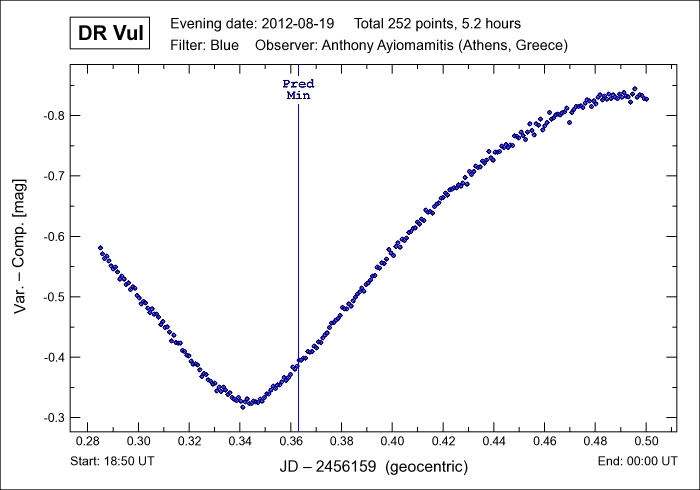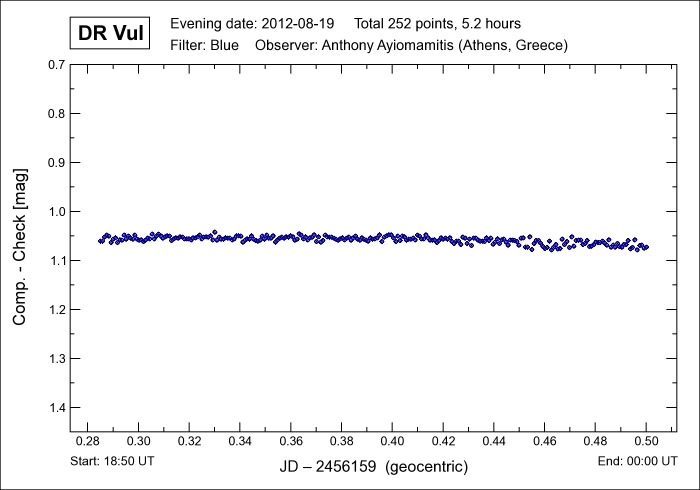
A variable star, as its name suggests, is a star whose magnitude varies intrinsically, in contrast to eclipsing binaries whose magnitude
varies as a result of one star in the binary system eclipsing the other. True variables are one of five types, namely Mira stars, semiregular
stars, cepheids, eruptive variables and, finally, cataclysmic variables. Minimum to maximum magnitude can range from days to many months with
some variables displaying irregular periods.
A popular method for the study of variable stars, particularly short-term variables, is by the use of the technique known as "differential
photometry". Rather than measure the (variable) magnitude of a variable star on an absolute scale, measurements are made over time relative to
one or more non-variable star(s) and these differences are then plotted so as to study and illustrate the relative or differential change in
magnitude. Due to the very large number of variables stars, the field of differential photometry represents one of the key fields in astronomy
whereby the amateur astronomer can make a meaningful and long-lasting contribution to both science and astronomy.
More recently, the search for extrasolar planets (over 750 discovered so far) has identified yet another interesting application for the
practice of differential photometry whereby the minute drops in magnitude of a star hosting an exoplanet are studied. Further details for the
interested party are available here.
Note: The eclipsing binary star DR Vul is a quick eclipsing binary variable star with a period
of 2.2508645 days and which involves a delta mag of 0.62 (v) magnitudes during this brief time interval. The variable nature
of DR Vulpeculae was discovered by C. Hoffmeister in 1935 whereas its period was established by V.P. Tsesevich in 1954. DR
Vulpeculae is an Algol-type eclipsing system where the binary components involve main sequence stars with spherical or slightly
ellipsoidal components and, hence, for its classification, namely "EA/DM". Longterm studies have identified an apsidal motion
involving a period of 37.8 years as well as variable depths for both primary and secondary minima. For the latter, it has been
suggested that a third star may be directly responsible for this inconsistancy (see
O'Connell, 1972).
Further details from the International Variable Star Index are available
here whereas an AAVSO finder chart is available
here.
Note: The minimum observed below is a secondary minimum.
|
Variable Star: DR Vul Other Designation: HD 339770, SAO 88380 RA / Dec: 20h 13m 47s / +26° 45' 02" Magnitude: 8.65 - 9.27 (v) Period: 2.2508645 days Variability: EA/DM Comparison Star: GSC 2162:018 Check Star: GSC 2162:1021 |
 
|
Date: Aug 19-20, 2012 21:50 - 03:00 UT+3 Location: Athens, Greece Equipment: AP 305/f3.8 Riccardi-Honders AP 1200GTO GEM SBIG ST-10XME SBIG CFW10 SBIG LRGB filters Integrations:
Temperatures:
Software: CCDSoft V5.00.201 AIP4Win V2.4.0 Processing: Reduction Differential Photometry |